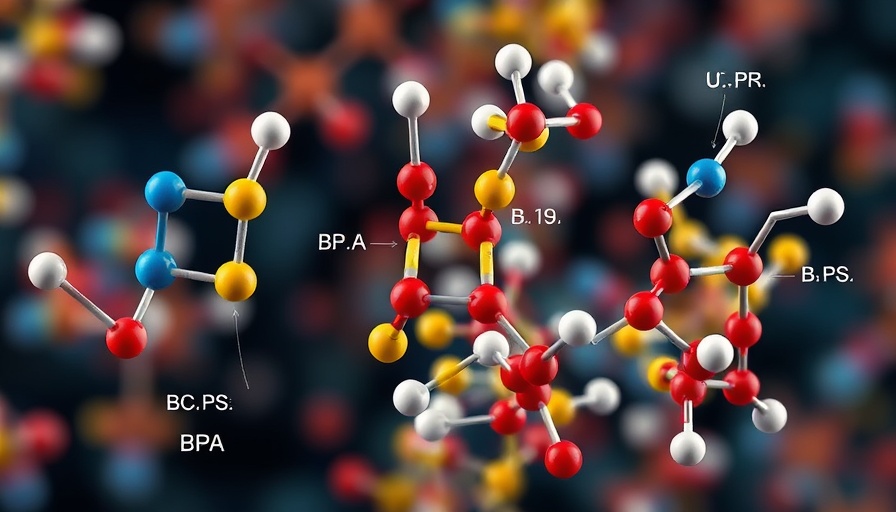
Understanding the Hidden Risks of BPA Alternatives
The promise of safer alternatives to Bisphenol A (BPA) is overshadowed by recent findings that suggest Bisphenol F (BPF) and Bisphenol S (BPS) may not be the harmless substitutes they claim to be. Derived from a virtual simulation by researchers at Universidad Miguel Hernández de Elche in Spain, this study highlights the accumulation of these compounds in biological membranes, akin to BPA, and their potential to disrupt endocrine functions.
Historical Context: The Evolution of Bisphenols
Over the past decades, BPA has been widely scrutinized for its health risks, prompting its replacement by BPF and BPS in various industries. Identified as endocrine disruptors, bisphenols interfere with hormonal balance and are present across a spectrum of consumer goods, from plastics to cosmetics. While BPA's detrimental impact has been established, its alternatives have found a place in our lives despite similar concerns.
Future Trends: Moving Towards Truly Safe Alternatives
As regulatory bodies evolve their stance on endocrine disruptors, the focus shifts towards genuinely safe compounds in manufacturing. The push for transparency and safer consumer products might drive further innovation and demand a reevaluation of existing materials. Practitioners and natural wellness experts can lead consumer awareness, advocating for natural and sustainable alternatives.
Unique Benefits of Understanding These Risks
Knowing the potential risks associated with BPA alternatives can empower practitioners and wellness experts to guide their clients towards healthier lifestyle choices. This insight not only helps in selecting safer products but also raises awareness about the broader implications of chemical exposure on long-term health.
Valuable Insights: By exploring the intricate issues surrounding endocrine disruptors, practitioners can offer guidance in choosing safer, more natural products. The study challenges the perception that BPA substitutes are necessarily less hazardous, paving the way for a better-informed choice.
Learn More: To dive deeper into the significant findings of this study and its implications for health-conscious choices, visit the original article at Universidad Miguel Hernández de Elche: https://www.eurekalert.org/news-releases/1065261
Source: Read the full findings on the potential risks of BPA alternatives at https://www.eurekalert.org/news-releases/1065261
 Add Row
Add Row  Add
Add 




Write A Comment